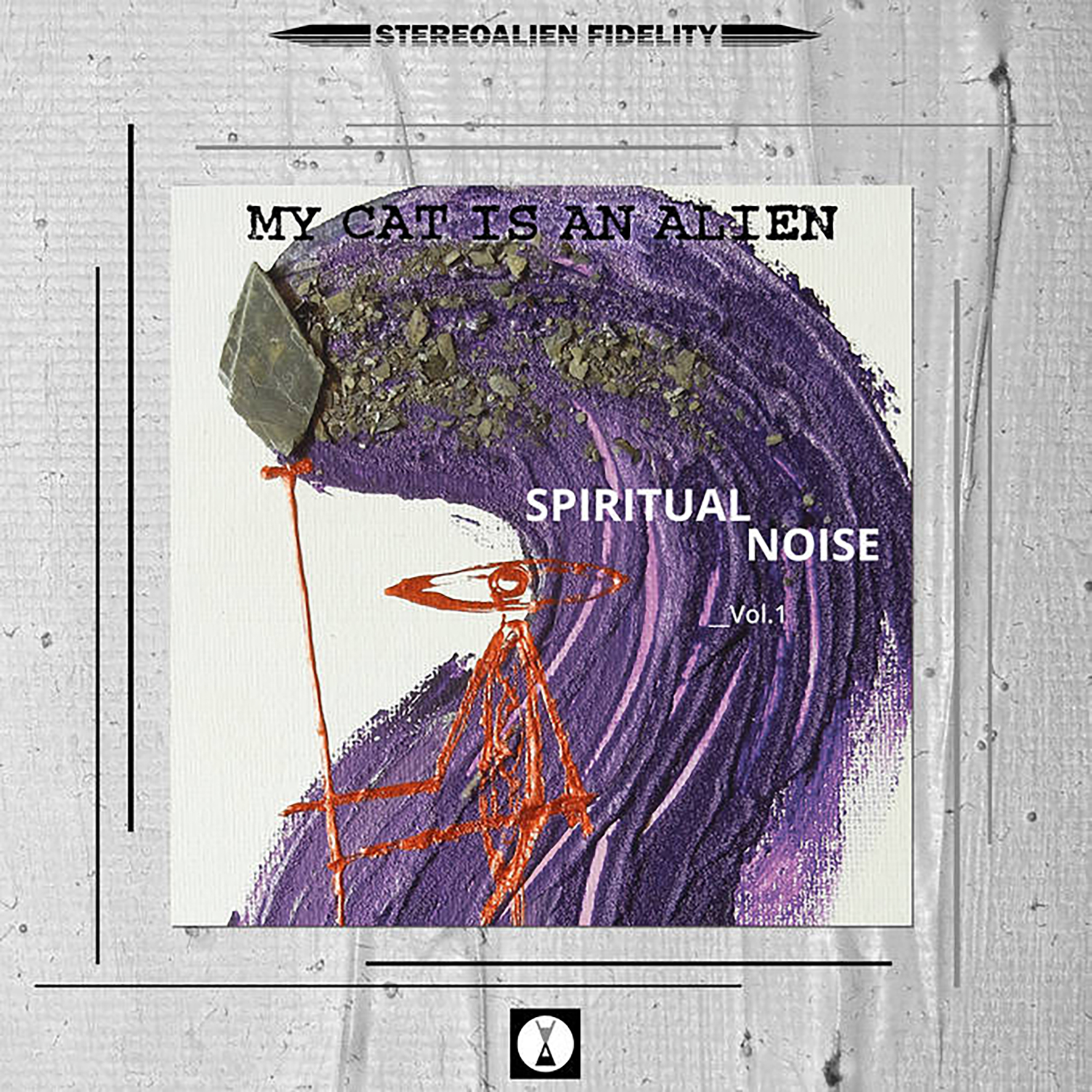 My Cat is an Alien has always been very much an "outsider art" phenomenon, as the Opalio brothers have spent the last two decades tirelessly conjuring and reshaping a hermetic alternate reality replete with its own unique philosophy and cosmology. In the process, they have released some truly original and beguiling auditory dispatches from their remote home in the Alps, but music is just one part of their larger vision and that vision has drawn increasing interest from the art world. For this latest release, the brothers unveil a new collaborative imprint with gallerist and publisher Marco Contini that seeks to bring the various threads of the their artistry together into a focused and harmonious whole. That endeavor is off to an excellent start, as Spiritual Noise is quite an impressive achievement as an art object. It is also an excellent album, as each of the two lengthy pieces unveils a fresh new facet of the duo's deep space trance states.
My Cat is an Alien has always been very much an "outsider art" phenomenon, as the Opalio brothers have spent the last two decades tirelessly conjuring and reshaping a hermetic alternate reality replete with its own unique philosophy and cosmology. In the process, they have released some truly original and beguiling auditory dispatches from their remote home in the Alps, but music is just one part of their larger vision and that vision has drawn increasing interest from the art world. For this latest release, the brothers unveil a new collaborative imprint with gallerist and publisher Marco Contini that seeks to bring the various threads of the their artistry together into a focused and harmonious whole. That endeavor is off to an excellent start, as Spiritual Noise is quite an impressive achievement as an art object. It is also an excellent album, as each of the two lengthy pieces unveils a fresh new facet of the duo's deep space trance states.
Two new shows just for you. We have squeezed out two extended release episodes for this weekend to get you through this week. They contain mostly new songs but there's also new issues from the vaults. The first show features music from Rider/Horse, Mint Field, Robert Aiki Aubrey Lowe, Anastasia Coope, ISAN, Stone Music, La Securite, Bark Psychosis, Jon Rose, Master Wilburn Burchette, Umberto, Wand, Tim Koh, Sun An, and Memory Drawings. The second episode has music by Laibach, Melt-Banana, Chuck Johnson, X, K. Yoshimatsu, Dorothy Carter, Pavel Milyakov, Violence Gratuite, Mark Templeton, Dummy, Endon, body / negative, Midwife, Alberto Boccardi, Divine. Cow in Maui from Veronika in Vienna. Get involved: subscribe, review, rate, share with your friends, send images! |



 Billed as a companion piece to 2018's stellar Impossible Star, Opaque Couché continues Meat Beat's recent hot streak with a double album packed with inventive and meticulously crafted dance music virtuosity. Given that Jack Dangers' work has passed though quite a succession of different phases over the years, Impossible Star is indeed Opaque Couché's closest reference point, yet the two albums go in significantly different directions within their roughly similar stylistic territories (and only this one pays homage to one of the world's ugliest colors). Whereas its predecessor embraced the feel of an inhuman and paranoid sci-fi dystopia, Opaque Couché takes that futuristic bent in much more playful and propulsively kinetic direction. Naturally, it all sounds great, as Dangers is a singularly exacting producer. His true genius, however, lies in how seamlessly he is able to mash together high art, deadpan kitsch, and vibrantly infectious drum loops. Admittedly, that has been true for quite a long time, but he seems to creep closer and closer to achieving the perfect balance with each new release.
Billed as a companion piece to 2018's stellar Impossible Star, Opaque Couché continues Meat Beat's recent hot streak with a double album packed with inventive and meticulously crafted dance music virtuosity. Given that Jack Dangers' work has passed though quite a succession of different phases over the years, Impossible Star is indeed Opaque Couché's closest reference point, yet the two albums go in significantly different directions within their roughly similar stylistic territories (and only this one pays homage to one of the world's ugliest colors). Whereas its predecessor embraced the feel of an inhuman and paranoid sci-fi dystopia, Opaque Couché takes that futuristic bent in much more playful and propulsively kinetic direction. Naturally, it all sounds great, as Dangers is a singularly exacting producer. His true genius, however, lies in how seamlessly he is able to mash together high art, deadpan kitsch, and vibrantly infectious drum loops. Admittedly, that has been true for quite a long time, but he seems to creep closer and closer to achieving the perfect balance with each new release. In its ongoing series of artist-curated compilations, the Idle Chatter label asked interdisciplinary New York-based artist Muyassar Kurdi to compile its latest release. Specifically presenting female artists from around the world, Reality Tunnels not only further demonstrates the vast expanse of what can be defined as experimental music, but also gives some largely (and unjustly) unrecognized artists a platform to be heard.
In its ongoing series of artist-curated compilations, the Idle Chatter label asked interdisciplinary New York-based artist Muyassar Kurdi to compile its latest release. Specifically presenting female artists from around the world, Reality Tunnels not only further demonstrates the vast expanse of what can be defined as experimental music, but also gives some largely (and unjustly) unrecognized artists a platform to be heard.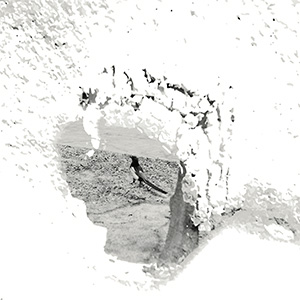 Live in Tokyo is a series of 11 distinct interpretations of the 1941 song "Skylark" by Johnny Mercer and Hoagy Carmichael performed by the quartet consisting of Orlando Lewis on clarinet, Franz-Ludwig Austenmeiser on keyboards, Hayden Pennyfeather on bass, and Roland Spindler on drums. This fact is anything but obvious upon listening, however. Based on the sound alone, it sounds more like an intimate series of improvisations rather than interpretations of a popular song from the 1940s, which was, I am sure, the performers' intent. It may bear some resemblance to its source material, however the quartet manage to create something nearly entirely original.
Live in Tokyo is a series of 11 distinct interpretations of the 1941 song "Skylark" by Johnny Mercer and Hoagy Carmichael performed by the quartet consisting of Orlando Lewis on clarinet, Franz-Ludwig Austenmeiser on keyboards, Hayden Pennyfeather on bass, and Roland Spindler on drums. This fact is anything but obvious upon listening, however. Based on the sound alone, it sounds more like an intimate series of improvisations rather than interpretations of a popular song from the 1940s, which was, I am sure, the performers' intent. It may bear some resemblance to its source material, however the quartet manage to create something nearly entirely original. Over the last few years, House of Mythology has become a vacation home of sorts for David Tibet, as he keeps returning there for one unique and ambitious side project after another. This latest divergence finds him teaming up with Andrew Liles for a very quixotic undertaking indeed: an album sung entirely in a dead language (Akkadian, one of Tibet's many deep interests). Given that, I had no doubt at all that it would be one the year’s strangest and unapologetically indulgent releases, but I was still unprepared for how truly bizarre it ultimately turned out to be. Suffice to say, there is nothing else out there quite like Wooden Child, as it feels like an especially unhinged prog opus that took a darkly phantasmagoric turn leading far from any recognizably earthly territory.
Over the last few years, House of Mythology has become a vacation home of sorts for David Tibet, as he keeps returning there for one unique and ambitious side project after another. This latest divergence finds him teaming up with Andrew Liles for a very quixotic undertaking indeed: an album sung entirely in a dead language (Akkadian, one of Tibet's many deep interests). Given that, I had no doubt at all that it would be one the year’s strangest and unapologetically indulgent releases, but I was still unprepared for how truly bizarre it ultimately turned out to be. Suffice to say, there is nothing else out there quite like Wooden Child, as it feels like an especially unhinged prog opus that took a darkly phantasmagoric turn leading far from any recognizably earthly territory.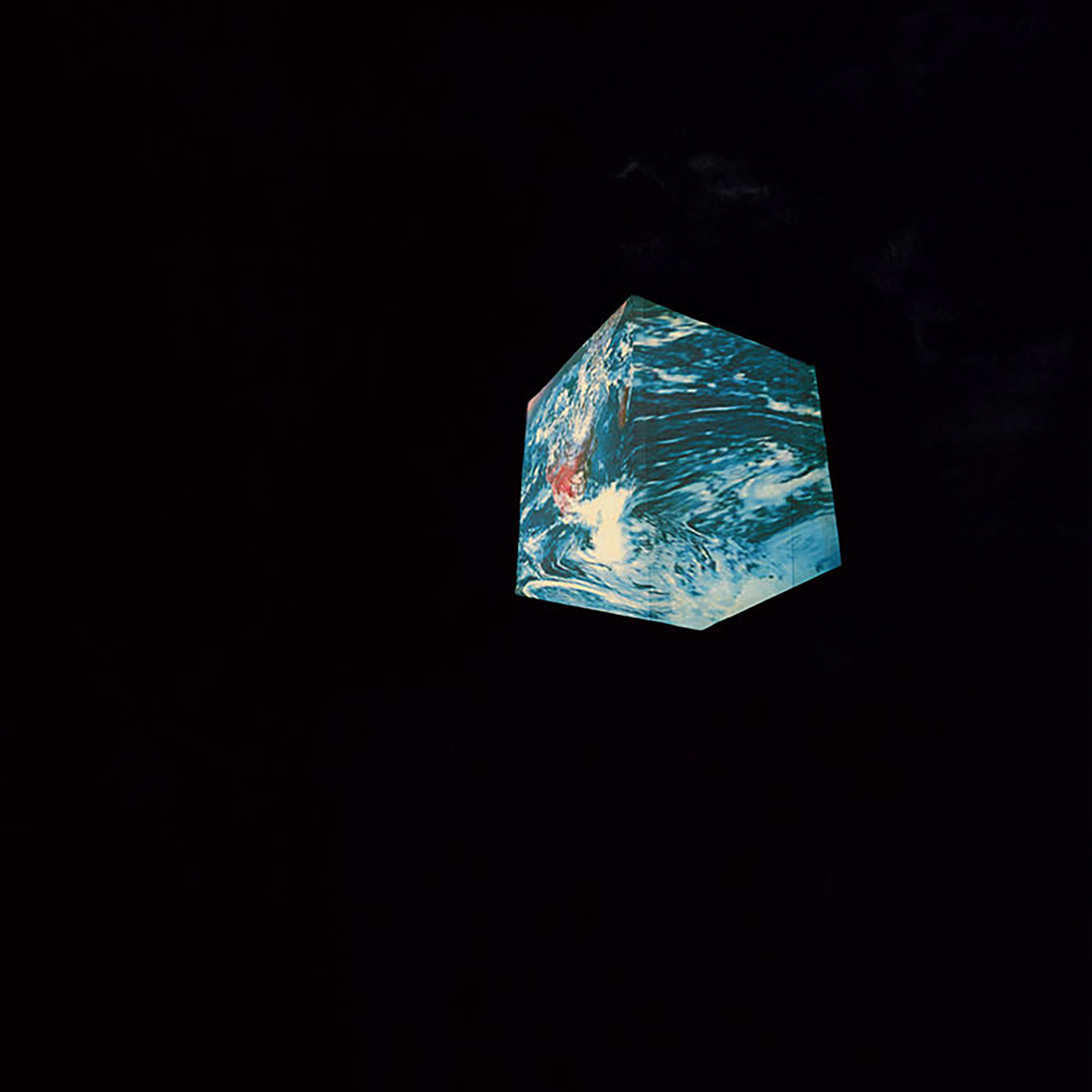 Eight years ago, Tim Hecker released his landmark Ravedeath, 1972 album and followed it with an EP that revisited the source material in a more organic, stripped-down fashion (Dropped Pianos). With Anoyo, Hecker beautifully revisits that same trick, albeit this time unveiling Konoyo's underlying gagaku ensemble rather than Ravedeath's underlying pianos. The other significant difference is that Anoyo is more than a mere companion piece that pulls back the curtain to reveal the scaffolding of a great album. Rather, Anoyo arguably equals and completes its predecessor, transforming Konoyo's blackened textures and haunted moods into something significantly warmer, more spacious, and more natural-sounding. Moreover, Anoyo gamely stretches even further from Hecker's comfort zone than its parent. Whereas Konoyo essentially fed Hecker's gagaku guests into a woodchipper, this release feels like a thoughtful, meditative, and organic collaboration with them, as Hecker's electronics eerily drift and swirl through the traditional Japanese sounds like a supernatural mist.
Eight years ago, Tim Hecker released his landmark Ravedeath, 1972 album and followed it with an EP that revisited the source material in a more organic, stripped-down fashion (Dropped Pianos). With Anoyo, Hecker beautifully revisits that same trick, albeit this time unveiling Konoyo's underlying gagaku ensemble rather than Ravedeath's underlying pianos. The other significant difference is that Anoyo is more than a mere companion piece that pulls back the curtain to reveal the scaffolding of a great album. Rather, Anoyo arguably equals and completes its predecessor, transforming Konoyo's blackened textures and haunted moods into something significantly warmer, more spacious, and more natural-sounding. Moreover, Anoyo gamely stretches even further from Hecker's comfort zone than its parent. Whereas Konoyo essentially fed Hecker's gagaku guests into a woodchipper, this release feels like a thoughtful, meditative, and organic collaboration with them, as Hecker's electronics eerily drift and swirl through the traditional Japanese sounds like a supernatural mist.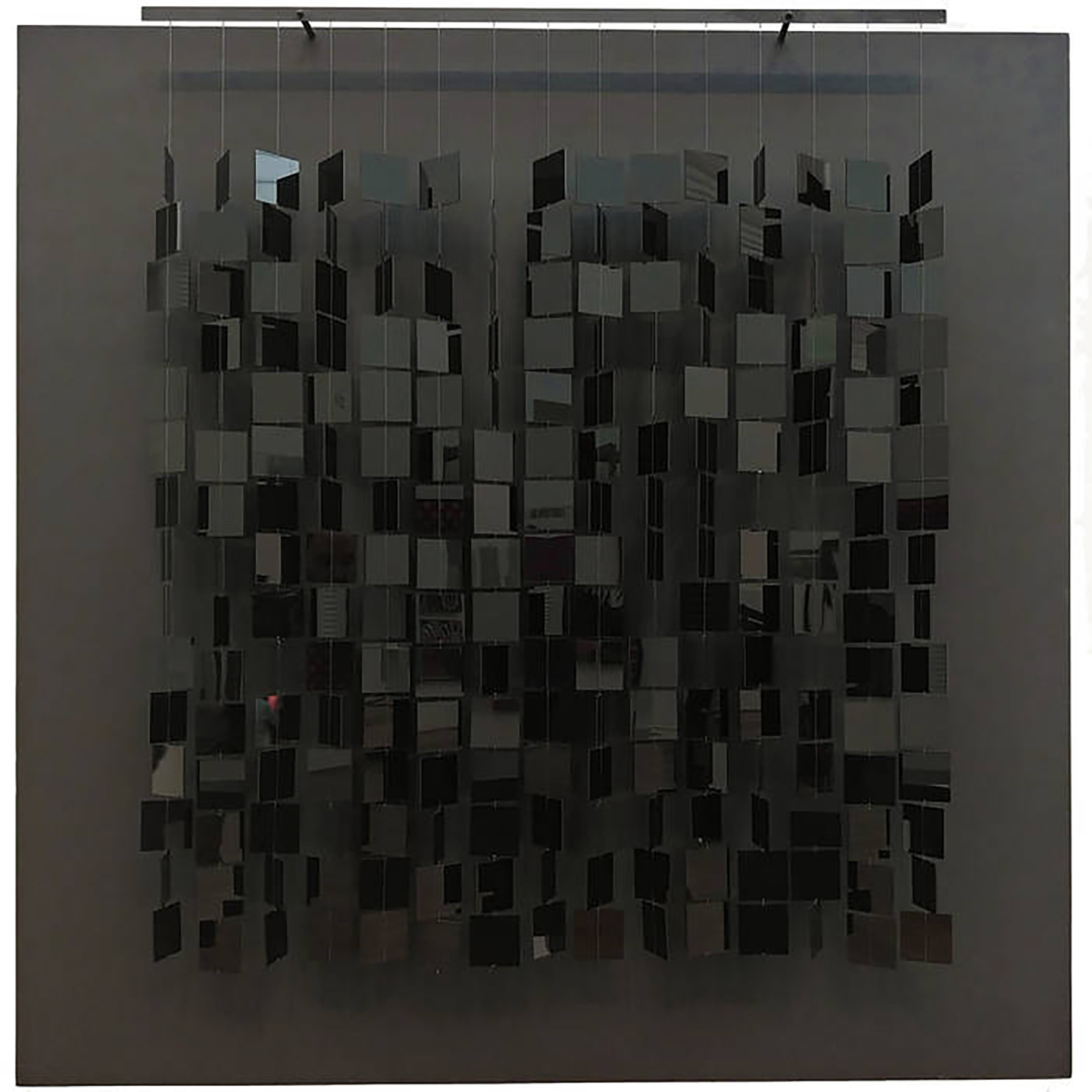 In the early 2000s, Keith Fullerton Whitman parted ways with his Hrvatski moniker and started recording more ambient-minded work under his own name. His first major release in that vein was 2002's Playthroughs (Kranky), an album that is fairly universally acknowledged as a classic of the genre. While I have no argument at all with Playthroughs' status as A Crucial Ambient Album, it is a bit more than that as well, as Whitman devised quite a fascinating and radical compositional approach for the album. Trying to comprehend the actual specifics of the process makes my synapses fizzle and smoke, but the gist is that he fed his guitar into a system of effects and software that produced a completely transformed beast that expanded, evolved, and reshaped with a mind of its own. Being a restlessly creative sort, Whitman soon moved on to other experiments, but he has been periodically revisiting that early system over the last decade with the benefit of newer software. The aptly named Late Playthroughs documents a divergent pair of live resurrections of that set-up dating from last year. Given the uncut, live nature of these pieces, this album is not quite as focused and sharply realized as the original, but it often does a beautiful job of both recapturing that magic and stretching the original aesthetic into stranger, darker terrain.
In the early 2000s, Keith Fullerton Whitman parted ways with his Hrvatski moniker and started recording more ambient-minded work under his own name. His first major release in that vein was 2002's Playthroughs (Kranky), an album that is fairly universally acknowledged as a classic of the genre. While I have no argument at all with Playthroughs' status as A Crucial Ambient Album, it is a bit more than that as well, as Whitman devised quite a fascinating and radical compositional approach for the album. Trying to comprehend the actual specifics of the process makes my synapses fizzle and smoke, but the gist is that he fed his guitar into a system of effects and software that produced a completely transformed beast that expanded, evolved, and reshaped with a mind of its own. Being a restlessly creative sort, Whitman soon moved on to other experiments, but he has been periodically revisiting that early system over the last decade with the benefit of newer software. The aptly named Late Playthroughs documents a divergent pair of live resurrections of that set-up dating from last year. Given the uncut, live nature of these pieces, this album is not quite as focused and sharply realized as the original, but it often does a beautiful job of both recapturing that magic and stretching the original aesthetic into stranger, darker terrain.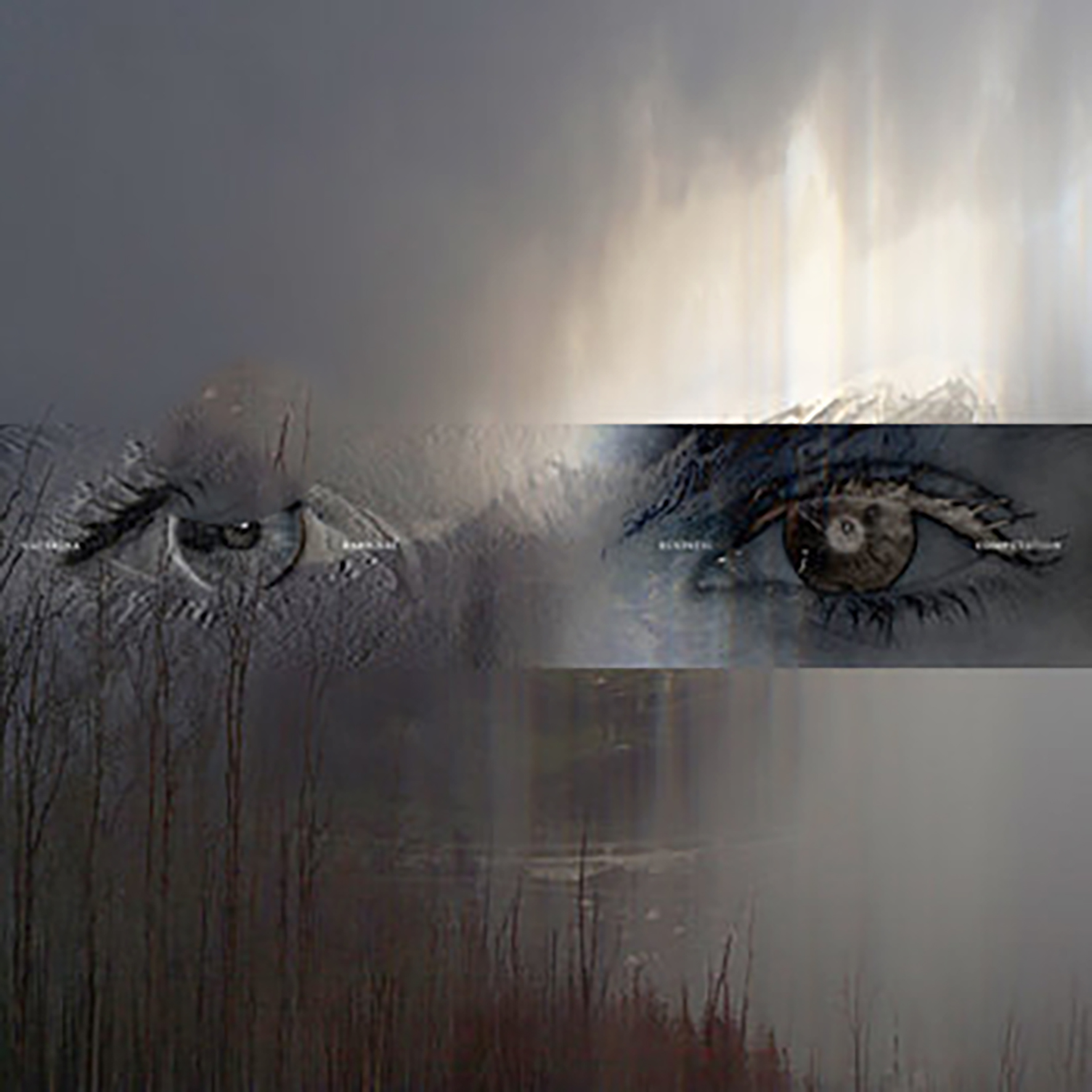 This Italian synth visionary made quite a spectacular impression with 2017's Patterns of Consciousness and now makes her Editions Mego debut with its proper follow-up. To some degree, Barbieri picks up exactly where she left off, as Ecstatic Computation shares its predecessor's masterfully executed conceptual conceit: using subtle shifts in obsessively repeating patterns to achieve a trancelike and hallucinatory effect. Given both that objective and Barbieri's singular compositional rigor, Ecstatic Computation bears little resemblance at all to the work of other synth artists, but it also sounds quite different from the sprawling and sometimes overwhelming Patterns of Consciousness as well. While it is hard to pick a favorite between the two albums, this one is definitely the more accessible, as Barbieri has distilled her vision into a much more concise and focused presentation. This album is also quite a bit more varied and unpredictable, as Barbieri occasionally allows the machine-like precision of these pieces to careen off the rails and unleash a glorious and vivid shower of sparks.
This Italian synth visionary made quite a spectacular impression with 2017's Patterns of Consciousness and now makes her Editions Mego debut with its proper follow-up. To some degree, Barbieri picks up exactly where she left off, as Ecstatic Computation shares its predecessor's masterfully executed conceptual conceit: using subtle shifts in obsessively repeating patterns to achieve a trancelike and hallucinatory effect. Given both that objective and Barbieri's singular compositional rigor, Ecstatic Computation bears little resemblance at all to the work of other synth artists, but it also sounds quite different from the sprawling and sometimes overwhelming Patterns of Consciousness as well. While it is hard to pick a favorite between the two albums, this one is definitely the more accessible, as Barbieri has distilled her vision into a much more concise and focused presentation. This album is also quite a bit more varied and unpredictable, as Barbieri occasionally allows the machine-like precision of these pieces to careen off the rails and unleash a glorious and vivid shower of sparks. I almost slept on this unexpectedly incendiary delight, as it deceptively seemed like just another solid drone album based on my initial and brief exposure to it. Then I noticed that Anna von Hausswolff had described it as "This is just.... wow." Given that she does not seem at all like the sort to be floored easily, I revisited A Meditation of Discord for a proper listen. I found myself sharing her sentiment by the end of the opening "Premonition," as Paul and his violin unleash a slow-burning and breathtaking one-man apocalypse in real time. To some degree, it is undeniably Paul's masterful live loop manipulation that makes that piece such a beguiling and impressive feat, but even if he had a full band and a limitless studio budget at his disposal,
I almost slept on this unexpectedly incendiary delight, as it deceptively seemed like just another solid drone album based on my initial and brief exposure to it. Then I noticed that Anna von Hausswolff had described it as "This is just.... wow." Given that she does not seem at all like the sort to be floored easily, I revisited A Meditation of Discord for a proper listen. I found myself sharing her sentiment by the end of the opening "Premonition," as Paul and his violin unleash a slow-burning and breathtaking one-man apocalypse in real time. To some degree, it is undeniably Paul's masterful live loop manipulation that makes that piece such a beguiling and impressive feat, but even if he had a full band and a limitless studio budget at his disposal, Argentinian trio Reynols are perhaps one of the most baffling and unabashedly unique artists to arise from the tape/noise underground scene of the past 20 years. Their recorded output has run the gamut of psychedelic rock, pure noise, heavily conceptual works (such as a processed field recording of chickens), and so much more. With the bulk of their work confined to ultra limited cassettes and CDRs, this beautiful collection of six CDs and a DVD, along with extensive liner notes makes for a perfect starting point of collaborations, two unreleased albums, and a slew of unreleased and rare songs.
Argentinian trio Reynols are perhaps one of the most baffling and unabashedly unique artists to arise from the tape/noise underground scene of the past 20 years. Their recorded output has run the gamut of psychedelic rock, pure noise, heavily conceptual works (such as a processed field recording of chickens), and so much more. With the bulk of their work confined to ultra limited cassettes and CDRs, this beautiful collection of six CDs and a DVD, along with extensive liner notes makes for a perfect starting point of collaborations, two unreleased albums, and a slew of unreleased and rare songs.
